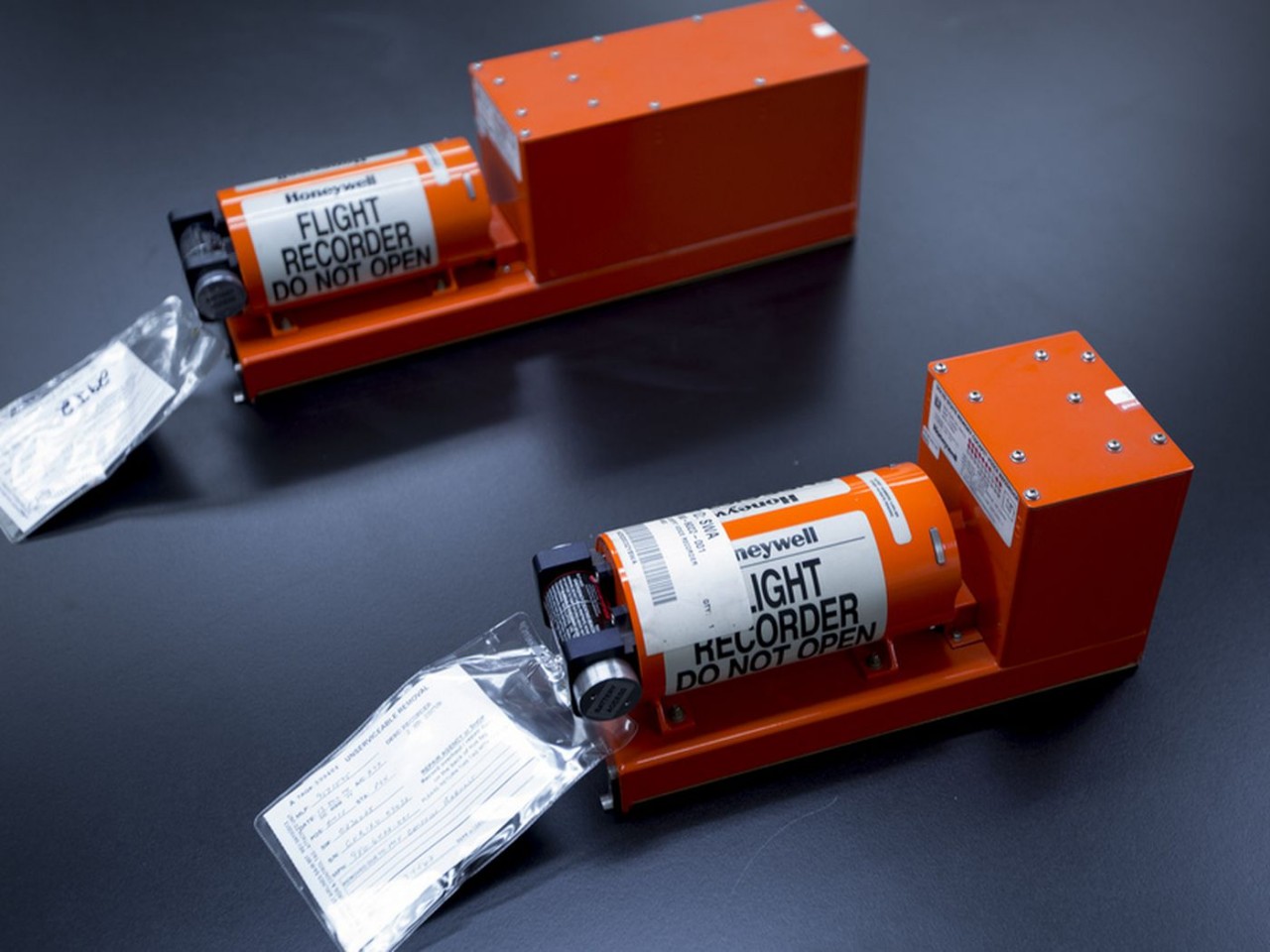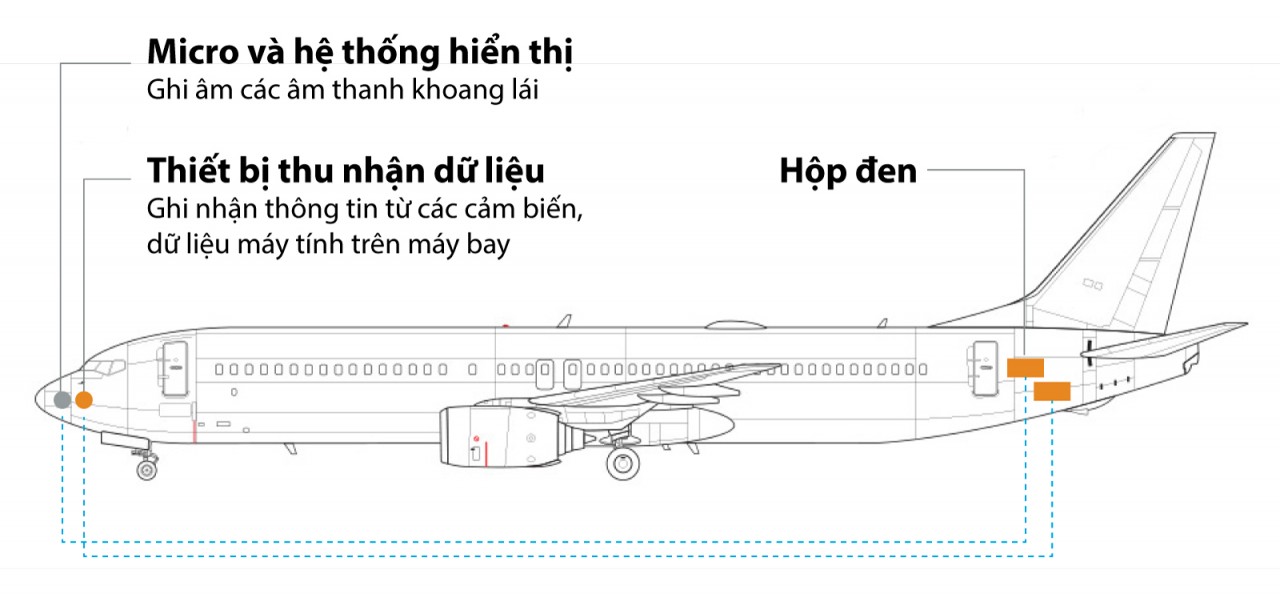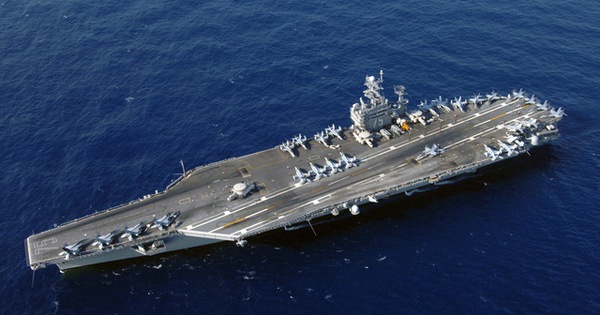Air crash decoding device
 |
| Black box on a Honeywell plane. |
The device that provides crash decoding data is called a “black box” because it was originally painted black. Today, equipment is often painted in bright colors, most commonly orange.
This distinct color, along with the reflective tapes attached to the outside of the black box, makes it easier for rescuers to locate the black boxes after the crash. These are especially useful when it comes to underwater rescues.
The black box was invented by Australian scientist Dr. David Warren (1925-2010) around 1954. Mr. Warren worked at the Aeronautical Research Laboratory (now part of the Defense Science and Technology Organization) in Melbourne, Australia from 1952 to 1983.
He got the idea for the cockpit voice recorder while investigating the world’s first commercial jet crash in 1953, after seeing a miniature tape recorder at a trade show.
“If a businessman used one of these on a flight and we were able to find it in the wreckage and play it back, that would help investigators know what caused the accident.”
“Any sounds related to what’s going on will be recorded and we can get them from the wreckage,” he said.
Pre-1954 devices used to record certain flight parameters do not include voice recording and cannot be reused, making them unsuitable for commercial flights. Dr. Warren’s invention was based on a magnetic recording method, which allowed for easy erasing and re-recording, which became possible on commercial flights.
Dr. Warren’s cockpit voice recording concept added a new dimension to flight data and proved immensely valuable to accident investigations. In addition to recording the crew’s conversations, the accidental sounds recorded on the flight’s black box also contribute important clues in deciphering the cause of the accident.
The black box is designed firmly, can maintain operation in the most difficult situations such as: impact resistance (3,400Gs), great pressure (227kg/6.5cm).2), high temperature (1,000-1,100oC) and submerged in the sea (24-30 days).
Each black box is equipped with an underwater locator beacon (ULB) mounted on the front panel. The ULB will broadcast a radio signal at a frequency of 37.5 kHz every second. The operation time of the ULB battery will depend on the manufacturer, usually it can operate continuously for about 30 days.
The ULB detection radius is 1,800–4,200m. The ULB is designed to operate even at a depth of 6,000m under the sea and can perform maintenance without removing the black box.

Currently, civil aircraft are equipped with two black boxes: the box is responsible for the cockpit voice recorder (CVR) and the flight data recorder (FDR).
The CVR is connected to microphones located in the cockpit to record sounds (such as speech, switching on, knocking on the door…). Usually there are 4, placed above the main pilot, copilot, 3rd pilot (if any) and in the middle of the cockpit.
Older generation CVRs used magnetic tape. Since the 1990s, CVRs have used solid-state memory boards, which are much more reliable than magnetic tape recorders due to their use of stacked memory chip arrays, so they have no moving parts, Easier maintenance and reduced chance of damage in crashes.
Magnetic tape recorders only record audio for the last 30 minutes of the flight, data is recorded continuously to complete one cycle. When new data is recorded, the old data is replaced. The CVR uses solid-state storage that can record 2 hours of audio.
FDR is connected to sensor devices that collect data such as acceleration, airspeed, altitude, wing settings, outside temperature, engine efficiency, cabin temperature and pressure… Tape recorder from the old generation can track about 100 parameters, while solid-state recorders have many times more parameters.
For example, in a Boeing 787, FDRs can record 146,000 parameters, up to several terabytes of data per flight. With that huge amount of data, airlines have a lot of information to monitor aircraft.
Whether the system is old or modern, all data collected by the aircraft’s sensors is sent to the flight data acquisition unit at the front of the aircraft. This device is usually found in the electronics compartment under the cockpit. It records the information from the sensors and sends it to the black box.
Flight information is all recorded in the black box by a specific algorithm. This makes it possible for authorities to access flight data when needed, providing an opportunity for aircraft manufacturers and aeronautical sciences to research the causes of plane crashes and overcome limitations. prevent future accidents.
Today, black boxes are used not only on airplanes but also on many other vehicles such as cars, trains…
at Blogtuan.info – Source: baoquocte.vn – Read the original article here



